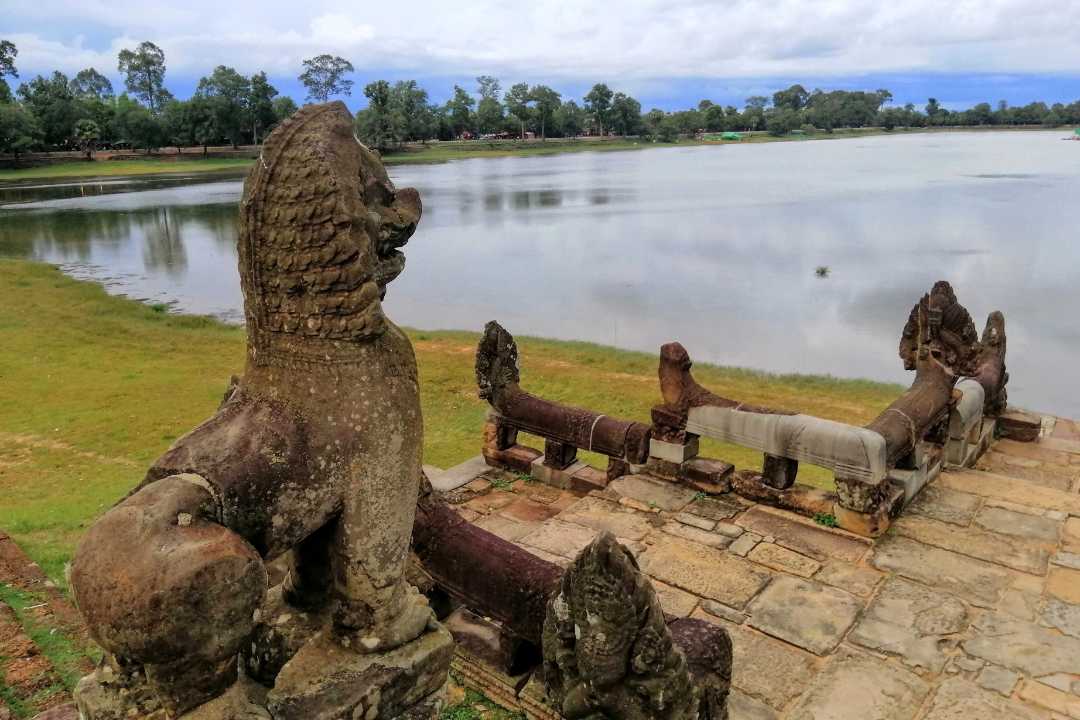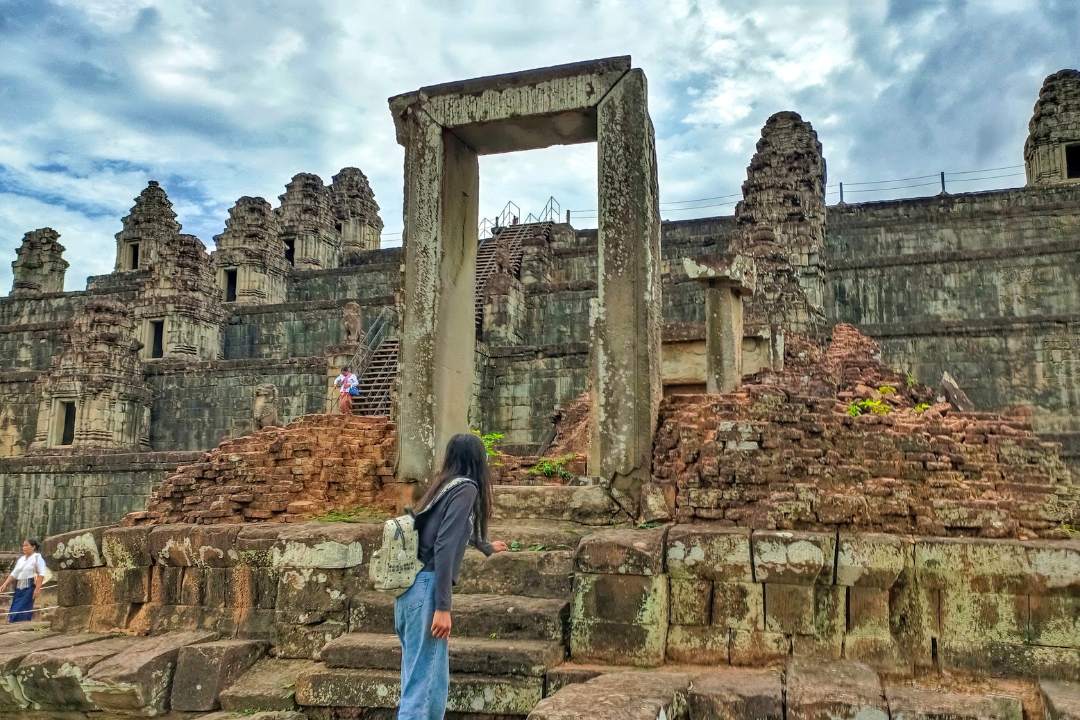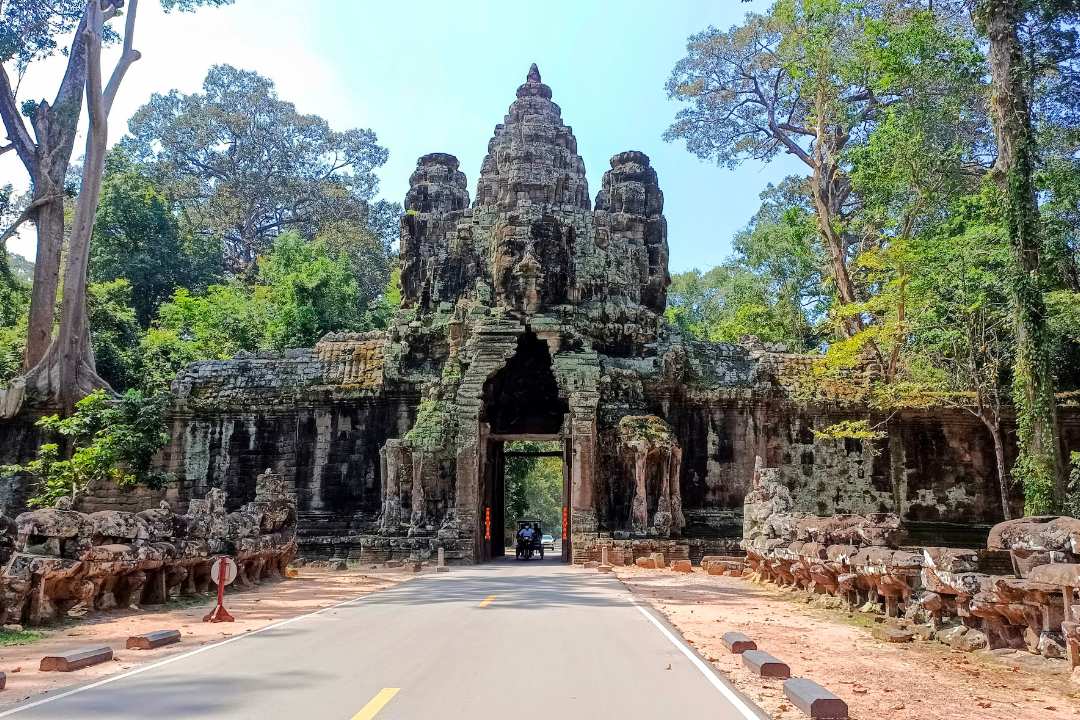How do the Floating Villages of Cambodia's Tonle Sap Lake Adapt to the Extreme Seasonal Water Level Changes?
The floating villages on Cambodia’s Tonle Sap Lake have a unique way of life shaped by the extreme changes in water levels they experience every year.
During the rainy season, the entire village floats high above the flooded forests, but in the dry season, those same homes sit grounded in the mud flats.
The villagers have adapted in incredible ways to deal with this seasonal ebb and flow.
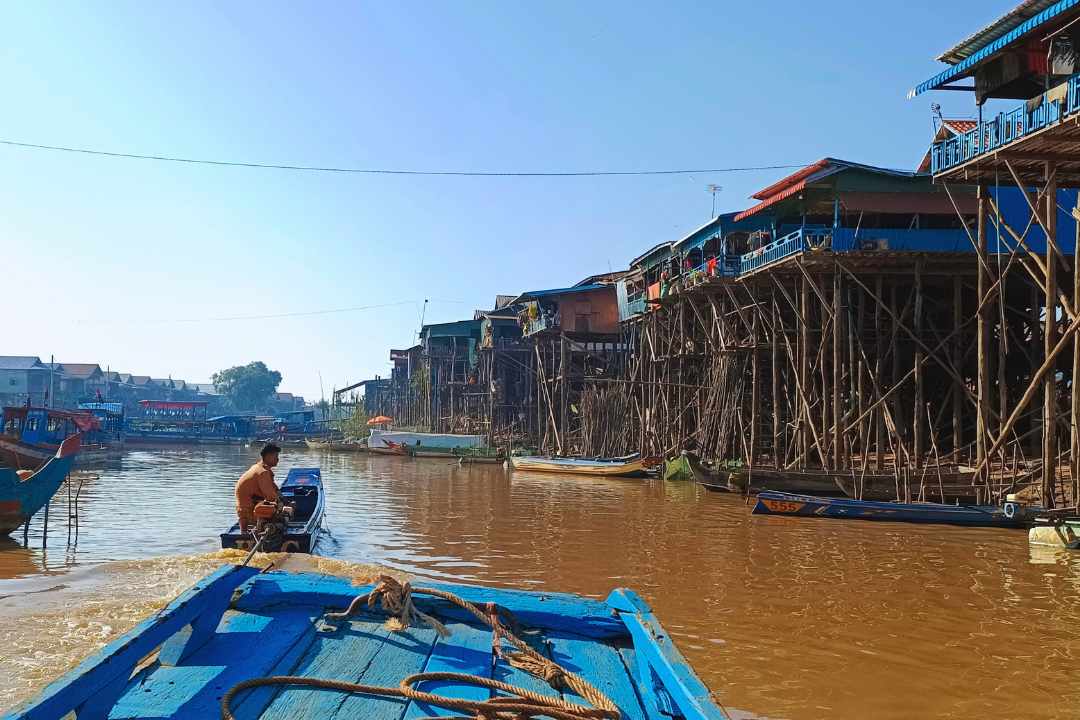
Table of Contents
ToggleIconic Kampong Phluk life on the lake
Key Adaptations
- Floating and amphibious houses
- Boats as main form of transport
- Stilted buildings on higher ground
- Fishing and foraging livelihoods
- Flood-proof food storage
- Portable livestock pens
- Building repairs in dry season
- Temporary relocation for some families
Floating and Amphibious Houses
The most obvious adaptation is that entire houses in the floating villages are built on bamboo platforms that rise and fall along with the water. The buildings are located in the permanent part of the village that never fully dries up, even in the dry season. Some homes are outfitted with boat engines allowing them to move around the village as needed.
In areas that do dry out seasonally, villagers often build “amphibious houses” that rest on stilts above the ground when the water is low, but float when the area floods each wet season. These stilt houses have retractable bamboo rails that allow the home to slide up and down the stilts. Some also have boat hull-shaped bases.
“In the dry season, we live on the land. When the water rises, our houses float up higher above it,” says Mr. Heng, a Chong Kneas villager. “We just open the panels and let them rise with the water.”
Boats as Main Form of Transport
Small wooden boats are the primary mode of transport between floating homes and around the village. During the peak flood season, larger pole boats are used to navigate between floating villages while avoiding the submerged trees. Some families own small motorboats. Canoes lined with bright orange life jackets transport tourists on village tours.
Narrow wooden walkways connect the boats and homes, but these are underwater for much of the year. Villagers get around by boat even for short trips to visit neighbors. Boats are also essential for fishing, transporting goods to market in Siem Reap, and getting children back and forth to floating schools.
Stilted Buildings on Higher Ground
In parts of the villages on relatively higher ground, homes and other structures are built on tall stilts secured deep in the mud. This includes the floating village schoolhouse, concrete buildings housing solar panels, and wooden restaurant structures catering to tourists.
During the peak flood season, these stilt buildings tower 10-15 feet above the water line. The stilts allow the structures to stay high and dry year-round while the water level fluctuates dramatically below. Extensive wooden steps and ramps provide access from boats below.
Fishing and Foraging Livelihoods
Fishing is one of the primary livelihoods for Tonle Sap’s floating villagers. The lake population booms each wet season, offering abundant fish for both consumption and sale at regional markets. Villagers use nets, traps, hooks and lines to catch fish. They forage water plants, insects, frogs, and crustaceans.
In the dry season, villagers continue fishing and foraging in the smaller pools and tributaries as the main lake shrinks. Some families relocate temporarily to lakeside spots that don’t dry out completely. Portable livestock pens are used to protect ducks, chickens, and pigs during seasonal moves.
Flood-Proof Food Storage
Villagers store rice, grains, dried fish, vegetables, and other essentials in metal drums, jars, and containers specially sealed to be waterproof. They tie these to the stilted floors or rooftops of homes to keep rodents and moisture out. Some homes have entire sealed and thatched roof sections serving as dry food storage rooms.
“We store up rice, vegetables, everything we need to eat during the wet months when it may be harder to fish and forage,” explains Mrs. Nov Sary, a Chong Kneas resident.
Experience the floating villages of Tonle Sap Lake on our fascinating Kampong Phluk Tour. Cruise through flooded mangroves, meet locals, and immerse yourself in this unique water-based way of life. Don’t miss this incredible opportunity to glimpse Cambodia’s floating communities. Book your Kampong Phluk Tour today!
Building Repairs and Maintenance in Dry Season
The dry season offers the opportunity to conduct repairs and maintenance on the stilt homes, floating platforms, boats, walkways, and other structures stressed by the rising and falling water levels. Villagers patch roofs, replace rotten wood, and improve stability and flotation before the floods return. They stock up on bamboo and other building materials.
Temporary Relocation
Some families temporarily relocate during the peak dry and wet seasons when their homes are in awkward transitional states between floating and grounded. At the height of the dry season, they may move closer to water sources. When flooding is highest, they relocate away from unsafe currents.
Unique Culture and Way of Life
The floating villages have a unique culture shaped by their environment. Villagers hold traditional ceremonies adapted to the watery landscape and have deep knowledge of the lake’s ecology passed down for generations. The villages draw tourists who marvel at this sustainable, flood-resilient way of life existing in harmony with nature.
After exploring how the ingenious floating villages on Cambodia’s Tonle Sap Lake adapt to extreme seasonal water changes, I’m left in awe of human resilience.
The villagers’ floating homes, stilt buildings, flood-proof storage methods, and livelihood flexibility allow their communities to thrive in an environment of drastic fluctuations.
Their example provides lessons in how we can live in harmony with nature.
For travelers passionate about seeing this sustainable way of life up close, MySiemReapTours offers personalized tours like the Kampong Phluk Tour and Siem Reap Floating Village Tour.
Contact us today to start crafting your own Tonle Sap floating village experience with a knowledgeable local guide by your side.
Featured
Explore more on My Siem Reap Tours
Koh Ker and Beng Mealea guided tour | Banteay Srei temple tour semi-private guided tour | Angkor Wat Sunrise shared tour | Koh Ker and Beng Mealea guided tour | Morning Siem Reap floating village tour | Afternoon Siem Reap floating village tour | Private Angkor Wat special tour | Kulen Waterfall small group guided Tour | Private Angkor Wat mix temples photo tour
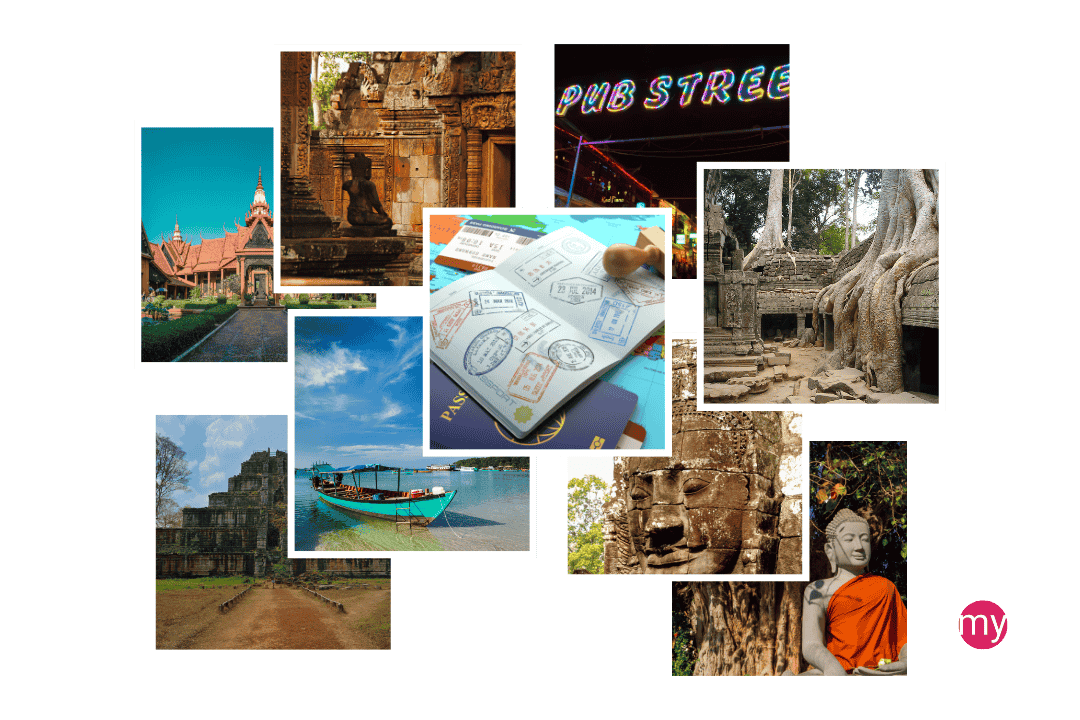
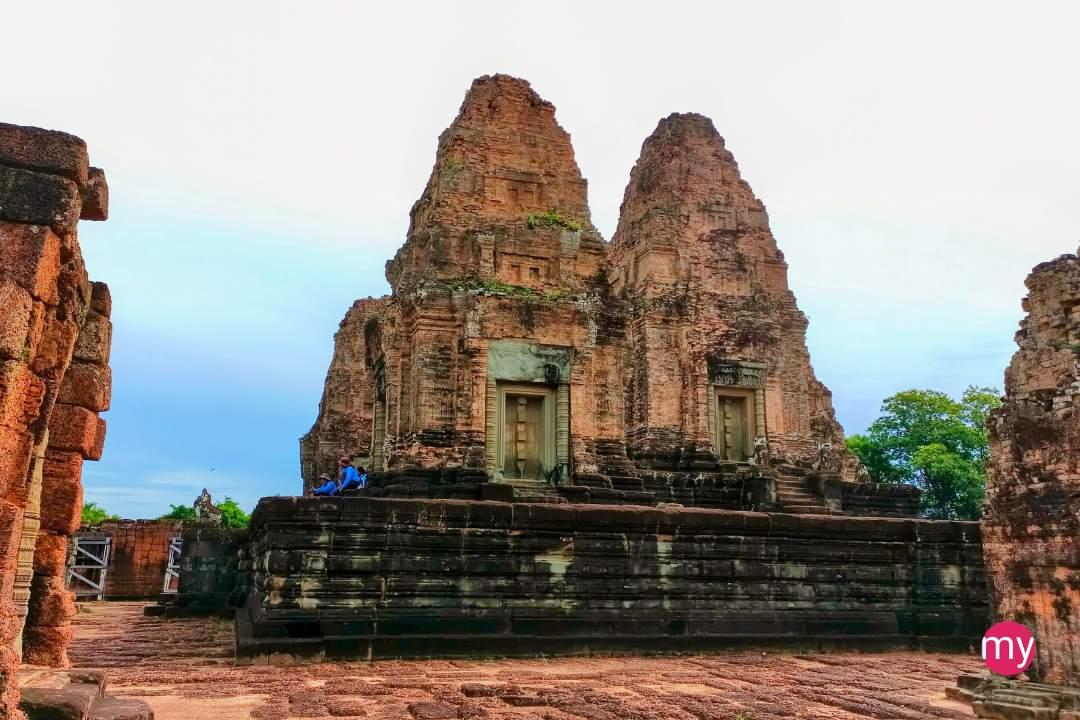
![Cambodian Festival Calendar [2025 Update]](https://mysiemreaptours.com/wp-content/uploads/2024/10/Cambodian-Festival-Calendar-2025-Update.jpg)
